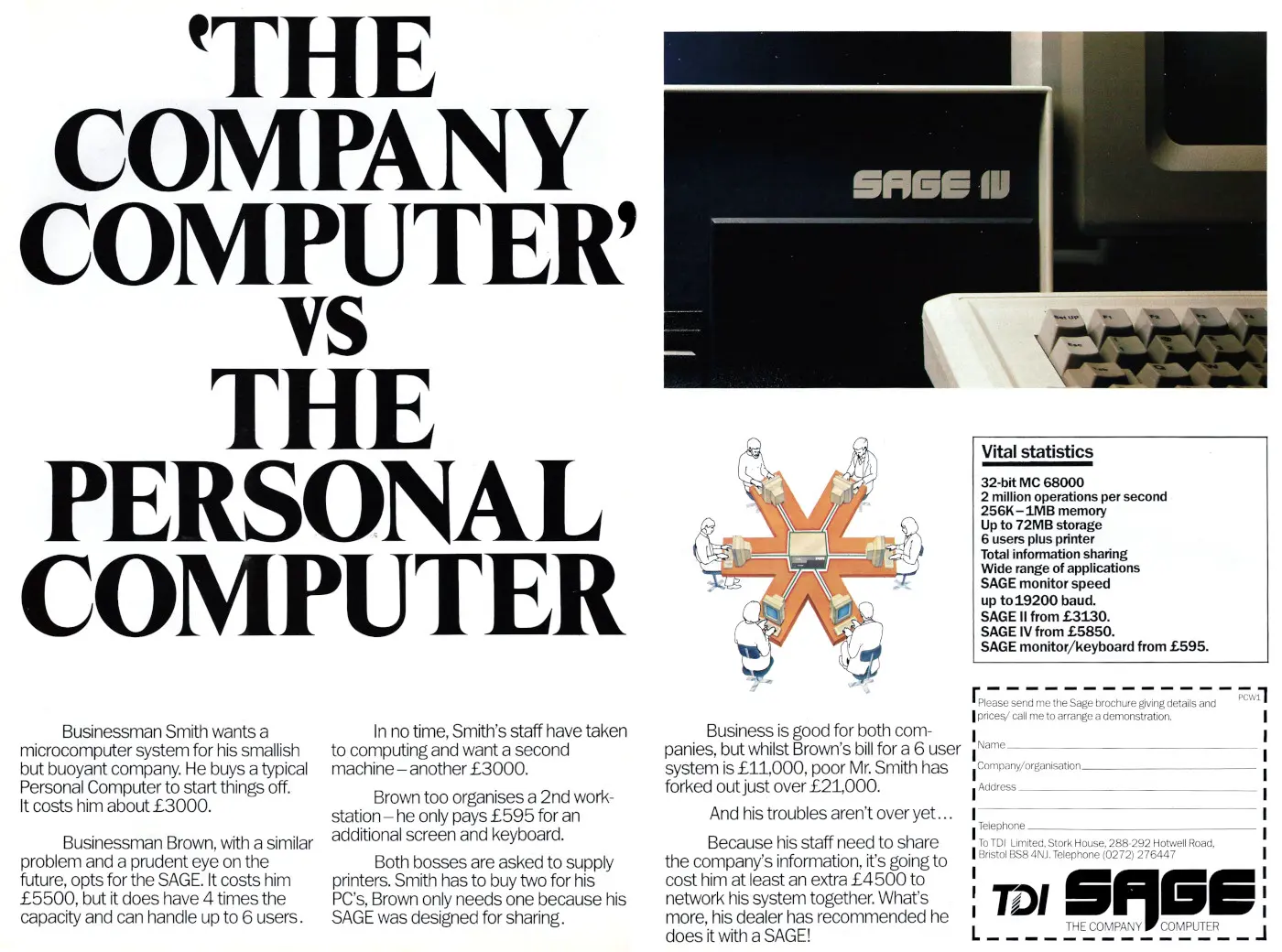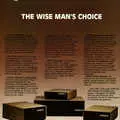
TDI/Sage Advert - March 1984
From Personal Computer World

The Company Computer vs. the Personal Computer
1983 had been the year of Ethernet, with 3Com breaking cover as the first commercial manufacturer, with its network card appearing in January on the Altos micro.
At the time it was considered a risky move[1], as the technology was somewhat unproven and fiercely expensive, retailing at about £700[2] (£3,090 in 2026) for an Ethernet interface card.
So companies like Sage, with its various multi-user machines, could be seen as fighting something of a rearguard action agains the networking upstart, with the concept of a central "server" supporting multiple terminals going up against the eventually-dominant PC/Network concept of linked fully-featured machines sharing storage and printers.
Sage wasn't alone, with other companies like ICL also sticking to the multi-user concept.
The bill for a six-user system, according to the advert, was £11,000 using a Sage (£46,400) versus about £22,500 (£95,000) for six PCs and the apparent £4,500 it would cost to network them all together.
This was a bit disingenuous as this was based on the price of an IBM PC. Others like Advance's 86B had already dropped to a more affordable £1,500 (£6,330) and networking soon became a commodity.
Sage's micros had already earned a reputation as "speed machines"[3] and in 1985 were in use in at least one major software house as a development platform.

Notice of the auction of the remains of Imagine Software by its liquidator, C. J. Chambers of Arthur Young McClelland Moores and Company. It shows the receivers apparently selling fifteen Sage computers. From Your Computer, December 1984
Denton Designs had formed out the remains of the collapse of infamous software company Imagine, with six of the mega-game-that-never-was Bandersnatch team setting up shop near Liverpool's Lime Street station.
Denton's Dave Colclough explained the company's use of the Sage IV saying:
"It has a 68000 chip running at 8MHz - about eight times faster than a home micro. It's not just that it's faster, [but] if you're writing for more than one machine, you can use a cross-assembler to assemble the source code - one that has the same syntax for both machines - and then download that into the target".
Imagine, which had itself formed from the earlier software house Bug Byte, had collapsed in July 1984 - the final straw being when it was sued for unpaid advertising bills by magazine publisher VNU, although it was also notorious for lavish spending on company cars as well as its advertising.
Its inventory of machines went up for auction at the end of the year, with viewing on the 10th and 11th of December. Sage's machines were clearly popular as a development platform as Imagine had no fewer than fifteen II and IVs.
Also up for grabs were Sirius, Apple Macs and an expensive Lisa, Dragon, Atari, Commodore, Acorn, BBC and Sinclair micros, and a solitary Alpha Micro 1042E. There were also 28 VDU monitors and 20 portable colour TVs.
In the August of 1985 Personal Computer World reported that the Sage II was still the fastest machine around, coming out as twice as fast as IBM's latest PC AT and seventeen times faster than TI's failed TI/99-4A, despite being two and a half years old[4].
Date created: 14 November 2014
Last updated: 27 November 2025
Hint: use left and right cursor keys to navigate between adverts.
Sources
Text and otherwise-uncredited photos © nosher.net 2026. Dollar/GBP conversions, where used, assume $1.50 to £1. "Now" prices are calculated dynamically using average RPI per year.

